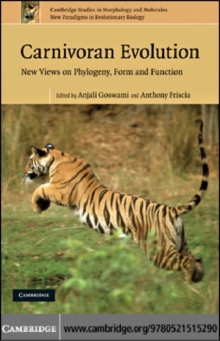
Evolution of the House Mouse Hardback
Edited by Milos Macholan, Stuart J. E. Baird, Pavel (Charles University, Prague) Munclinger, Jaroslav Pialek
Part of the Cambridge Studies in Morphology and Molecules: New Paradigms in Evolutionary Bio series
Hardback
Description
The house mouse is the source of almost all genetic variation in laboratory mice; its genome was sequenced alongside that of humans, and it has become the model for mammalian speciation.
Featuring contributions from leaders in the field, this volume provides the evolutionary context necessary to interpret these patterns and processes in the age of genomics.
The topics reviewed include mouse phylogeny, phylogeography, origins of commensalism, adaptation, and dynamics of secondary contacts between subspecies.
Explorations of mouse behaviour cover the nature of chemical and ultrasonic signalling, recognition, and social environment.
The importance of the mouse as an evolutionary model is highlighted in reviews of the first described example of meiotic drive (t-haplotype) and the first identified mammalian speciation gene (Prdm9).
This detailed overview of house mouse evolution is a valuable resource for researchers of mouse biology as well as those interested in mouse genetics, evolutionary biology, behaviour, parasitology, and archaeozoology.
Information
-
Available to Order - This title is available to order, with delivery expected within 2 weeks
- Format:Hardback
- Pages:548 pages, 17 Tables, black and white; 24 Plates, color; 60 Halftones, unspecified; 18 Line drawings
- Publisher:Cambridge University Press
- Publication Date:19/07/2012
- Category:
- ISBN:9780521760669
Information
-
Available to Order - This title is available to order, with delivery expected within 2 weeks
- Format:Hardback
- Pages:548 pages, 17 Tables, black and white; 24 Plates, color; 60 Halftones, unspecified; 18 Line drawings
- Publisher:Cambridge University Press
- Publication Date:19/07/2012
- Category:
- ISBN:9780521760669










